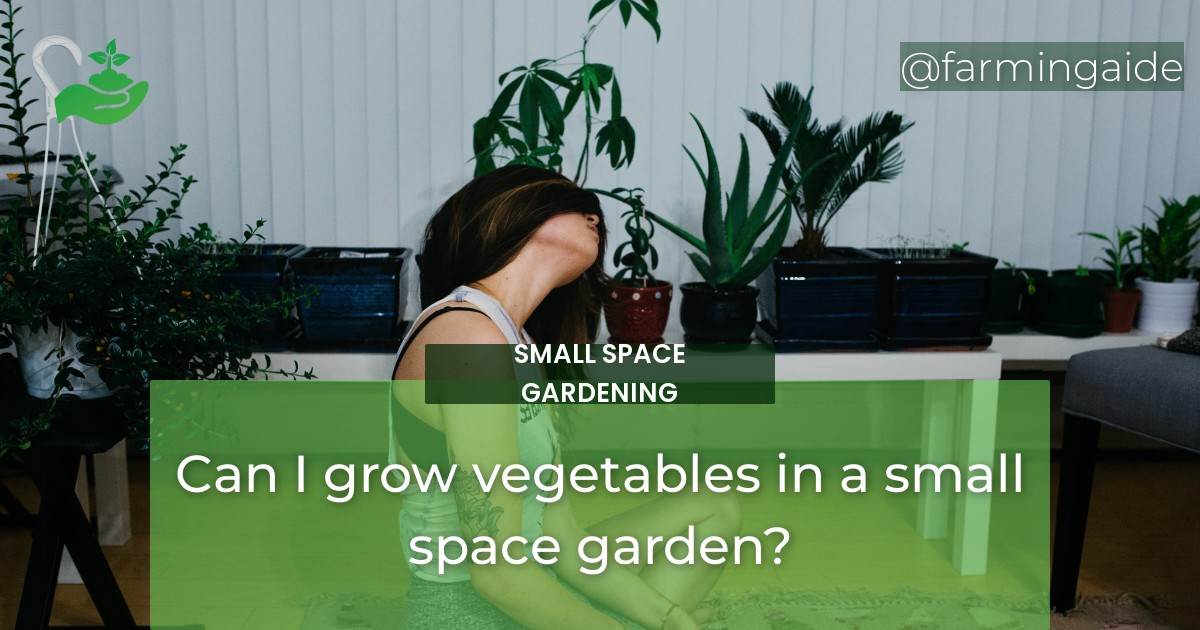Yes, you can definitely grow vegetables in a small space garden! With the rise of urban vegetable gardening, many people are turning to small space gardening to produce fresh and sustainable produce. Small space gardening is an excellent option for those who live in cities, have limited outdoor space, or want to reduce their carbon footprint. In this article, we’ll explore the benefits and challenges of small space gardening and provide tips on growing vegetables in a small space garden.
Understanding Small Space Gardening
Benefits of Small Space Gardening
- Saves space and is ideal for urban homes
- Promotes sustainable living
- Provides fresh produce
- Can be a fun and rewarding hobby
Small space gardening has numerous advantages that make it an excellent choice for vegetable gardening. By growing vegetables in small areas, you can make the most of your available space and produce fresh, healthy food for your family. Additionally, small space gardening promotes sustainable living by reducing transportation and packaging waste associated with grocery store produce. Finally, gardening can be a fun and rewarding hobby that promotes relaxation and mental health.
Challenges of Small Space Gardening
- Limited space for plants to grow
- Lack of sunlight
- Limited soil and nutrients
- Pests and diseases
While small space gardening has many benefits, it also comes with its own set of challenges. One of the biggest challenges is limited space for plants to grow, which can make it difficult to grow larger vegetables like squash and pumpkins. Additionally, small space gardens may not receive enough sunlight, which can stunt plant growth or cause vegetables to become misshapen. Limited soil and nutrients can also be a problem, as soil in small containers can become depleted more quickly. Finally, pests and diseases can be a major issue, as small space gardens are more susceptible to infestations and diseases due to the lack of space between plants.
Growing Vegetables in a Small Space Garden
Choose the Right Vegetables to Grow
When planning a small space garden, it’s important to choose the right vegetables to grow. Some vegetables are better suited for small spaces than others. Here are a few vegetables that are suitable for small spaces:
- Tomatoes
- Peppers
- Lettuce
- Spinach
- Radishes
These vegetables are all relatively compact and can be grown in containers or vertically.
Container Gardening
Container gardening is an excellent option for small space gardening. When choosing a container, it’s important to choose one that is the right size for your vegetable. Here are a few tips for container gardening:
- Choosing the right container: Choose a container that is the right size for your vegetable and has adequate drainage.
- Soil and fertilizer: Choose a high-quality soil and fertilizer that is rich in nutrients.
- Watering and drainage: Make sure your container has adequate drainage and water your vegetable regularly.
Vertical Gardening
Vertical gardening is another option for small space gardening. By growing vegetables vertically, you can make the most of your available space and grow more vegetables in a small area. Here are a few tips for vertical gardening:
- Choosing the right trellis or support: Choose a trellis or support that is the right size for your vegetable and can support its weight.
- Soil and fertilizer: Choose a high-quality soil and fertilizer that is rich in nutrients.
- Watering and drainage: Make sure your vertical garden has adequate drainage and water your vegetable regularly.
Companion Planting
Companion planting is another technique that can be used for small space gardening. By planting compatible vegetables together, you can maximize your yields and reduce the risk of pests and diseases. Here are a few tips for companion planting:
- Choosing the right plants to grow together: Choose plants that have complementary growing habits and nutrient requirements.
- Benefits of companion planting: Companion planting can help reduce the risk of pests and diseases and improve soil health.
- Examples of compatible vegetables: Tomatoes and basil, carrots and onions, and beans and corn are all compatible vegetables.
ALSO READ
Maintaining Your Small Space Garden
Watering
Watering is an important part of maintaining your small space garden. Here are a few tips for watering:
- Frequency and amount of water: Water your vegetables regularly and make sure they receive enough water to stay healthy.
- Watering techniques: Water your vegetables at the base of the plant to avoid wetting the leaves and promote healthy root growth.
Fertilizing
Fertilizing is another important part of maintaining your small space garden. Here are a few tips for fertilizing:
- Organic vs. chemical fertilizers: Choose an organic fertilizer that is rich in nutrients and promotes healthy soil.
- Frequency and amount of fertilizer: Fertilize your vegetables regularly to promote healthy growth.
Pest and Disease Control
Pest and disease control is an important part of maintaining your small space garden. Here are a few tips for controlling pests and diseases:
- Natural pest control methods: Use natural pest control methods like companion planting and insecticidal soap to control pests.
- Common vegetable pests and diseases: Common vegetable pests and diseases include aphids, slugs, and powdery mildew.
Harvesting
Knowing when to harvest your vegetables is an important part of maintaining your small space garden. Here are a few tips for harvesting:
- Knowing when to harvest: Harvest your vegetables when they are ripe and ready to eat.
- Proper harvesting techniques: Use sharp scissors or a knife to harvest your vegetables and avoid damaging the plant.
Conclusion
Growing vegetables in small space gardens is an excellent way to produce fresh, healthy food in urban areas or with limited outdoor space. By choosing the right vegetables, using container or vertical gardening techniques, and properly maintaining your garden, you can enjoy a bountiful harvest of fresh produce. Whether you’re a seasoned gardener or just starting out, small space gardening is a fun and rewarding hobby that promotes sustainability and healthy living.


